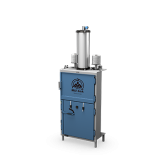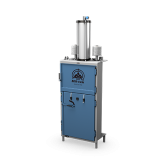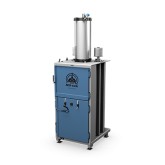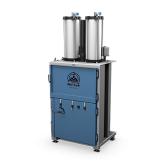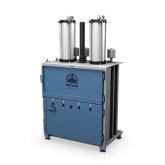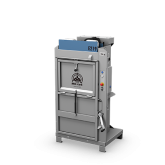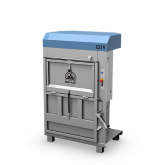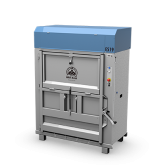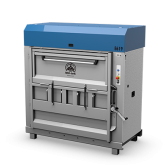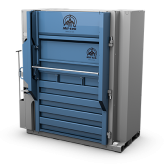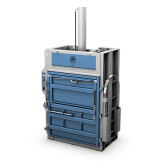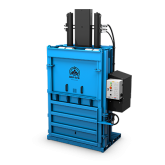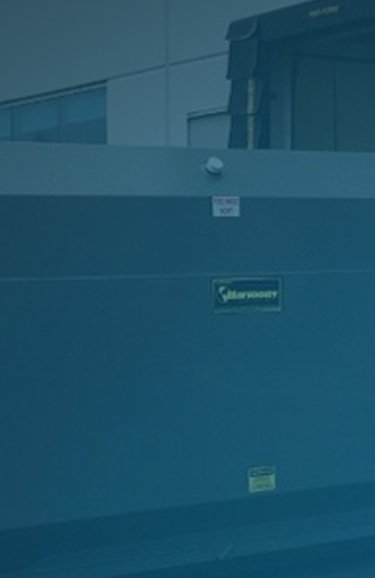
Baler vs. Compactor:
What’s the difference?
When considering waste management solutions, it’s essential to understand the difference between a compactor and a baler. Both reduce the volume of waste, but they work in different ways and serve different business needs. Below, we break down how each works, their benefits, and why many businesses choose balers for long-term efficiency.
What is a compactor?
A compactor is a larger, heavy-duty machine that is usually placed outdoors. It compresses general waste or bulky recyclables into a much smaller volume. Unlike balers, compactors do not tie waste into bales. Instead, the compacted waste is collected in a container for pickup.
- Placement: Outdoors, due to size and storage container requirements.
- Function: Reduces the overall volume of waste.
- Best for: Businesses that generate a wide range of waste materials and require fewer, larger waste collections.
Key benefits of compactors
- Handles bulky or mixed waste, not just cardboard.
- Reduces the number of waste pickups by maximizing container capacity.
- Businesses seeking fewer pickups for mixed waste.
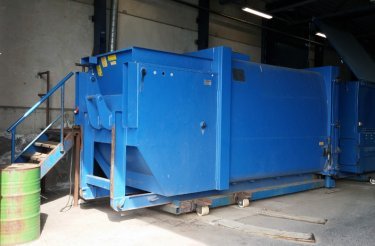
What is a baler?
A baler is specifically designed to compress recyclable materials – such as cardboard, paper, and plastic – into dense, tied bales. These bales are neat, stackable, and ready to be collected for recycling.
- Placement: Indoors, near the source of waste.
- Function: Creates compact bales that can be stored or sold to recyclers.
- Best for: Businesses that produce large volumes of recyclable waste, particularly cardboard and plastic, and prioritize recycling.
Key benefits of balers
- Produces bales that are desirable for recycling markets.
- Supports sustainability initiatives and can generate revenue from recyclables.
- Increases efficiency by reducing time spent transporting waste across a facility.
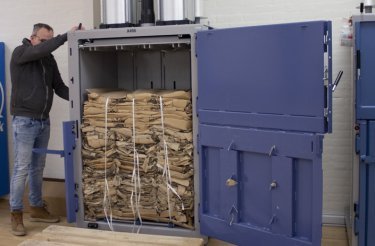
Here’s why a compactor may not always be the ideal choice
While compactors are effective at reducing waste volume, relying on one large outdoor cardboard compactor can create several challenges that hinder efficiency and increase costs:
Logistical inefficiency
Employees must transport waste long distances to reach the compactor, especially in larger facilities. This takes time away from their primary tasks and slows down overall productivity.
Weather and safety concerns
Because compactors are usually placed outdoors, staff must move waste in all conditions – rain, snow, or extreme heat – raising safety risks and causing unnecessary delays.
Rigid collection contracts
Compactor contracts often come with fixed pickup schedules. If your waste volume suddenly spikes, this can result in costly unscheduled pickups or overflowing containers.
Limited recycling value
Compactors compress waste into dense blocks, but do not prepare it for recycling. As a result, valuable cardboard and plastic often end up as general waste instead of being reused, reducing potential cost savings and sustainability benefits.
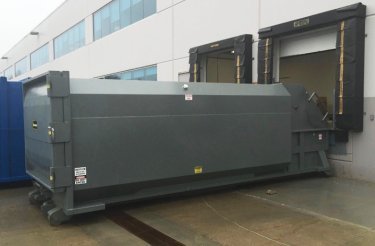
Why indoor balers are the smarter choice
Indoor balers are placed inside the facility, close to where waste is generated. This eliminates unnecessary transport and saves employees valuable time. Compared to large outdoor compactors, they integrate seamlessly into daily operations and significantly improve workflow efficiency.
Balers also embody lean waste management principles. They minimize not just material waste, but also wasted time and movement. This means fewer delays, more productivity, and reduced environmental impact thanks to less waste transport.
Importantly, balers are adaptable and scalable. As your business grows, indoor balers can evolve with your operations, ensuring continuous optimization without excess capacity or underutilized resources.
Explore a diverse range of Mil-tek balers below:
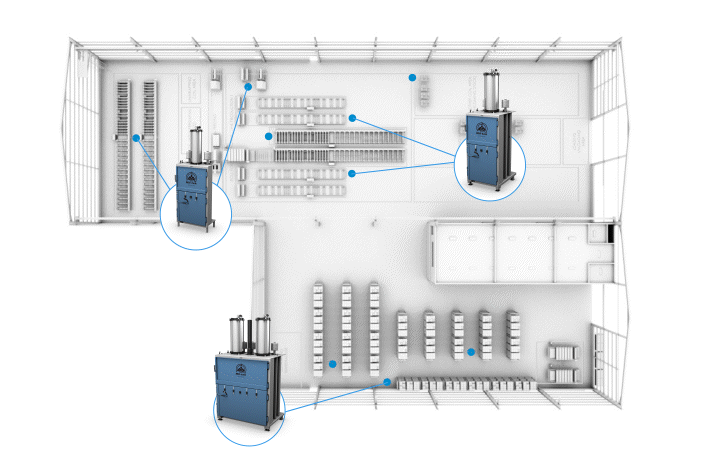
4 Benefits of using indoor balers instead of a compactor:
1. Enhanced operational effectiveness
Streamlined waste handling:
Indoor balers are generally situated nearer to where the waste is generated, minimizing the time and effort required for employees to transport cardboard waste. Their close proximity facilitates faster and more frequent disposal, especially beneficial during busy times.
Uninterrupted performance:
Indoor balers operate independently of outside weather conditions, unlike a large compactor placed outdoors. They can function continuously, unaffected by rain, snow, or extreme temperatures, ensuring steady and delay-free waste management.
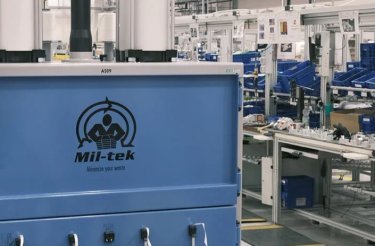
2. Improved cost efficiency
Reduced transportation costs:
Using an indoor baler allows companies to accumulate compacted bales until enough gather to warrant a collection, cutting down on the frequency and expense of waste pickup.
Profit from recycling:
Compacted bales of cardboard are typically more desirable in the recycling market than loosely compacted materials. Businesses can sell these bales to recyclers, transforming waste management into a profit-making endeavor.
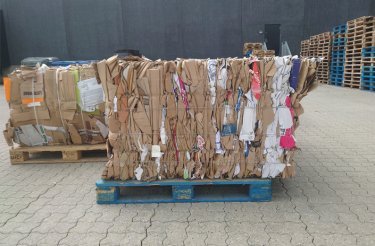
3. Improved space management
Optimal space usage: Indoor balers can be seamlessly incorporated into a business’s current spatial arrangement, making better use of vertical space. This smaller footprint enables businesses to fully utilize their operational areas without requiring substantial outdoor space.
Tailored baler options: Balers are available in a range of sizes and capacities, offering businesses the opportunity to select a model that perfectly matches their specific space and volume needs.
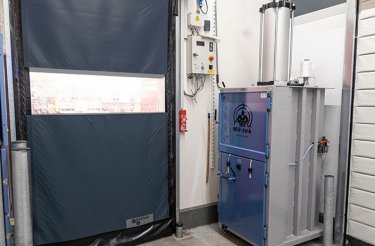
4. Environmental advantages
Decreased environmental impact: Indoor balers reduce the number of required pickups and enable more efficient scheduling, which helps cut down on carbon emissions related to waste transportation. Enhanced recycling efficiency and less frequent transportation contribute to a reduced overall environmental footprint.
Reduced cross contamination: Balers placed indoors contribute to a neater and more controlled waste handling environment. This improved containment lessens the risk of environmental pollution and avoids issues such as litter or pests often linked with outdoor compactors.
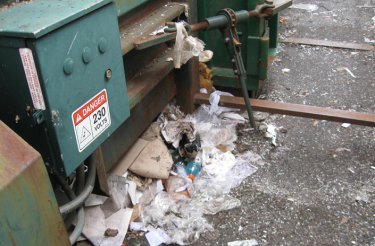
Other types of compactors
While this guide mainly compares large outdoor compactors with indoor balers, it’s worth noting that the term “compactor” is also used to describe a couple of other machines commonly found in waste management:
Polystyrene compactors – reduce bulky EPS/polystyrene into dense, recycle-ready blocks.
Mixed waste compactors – small indoor units for compressing general waste.
Stop compacting, start baling!
Contact us today to find the right baler(s) for your business.
